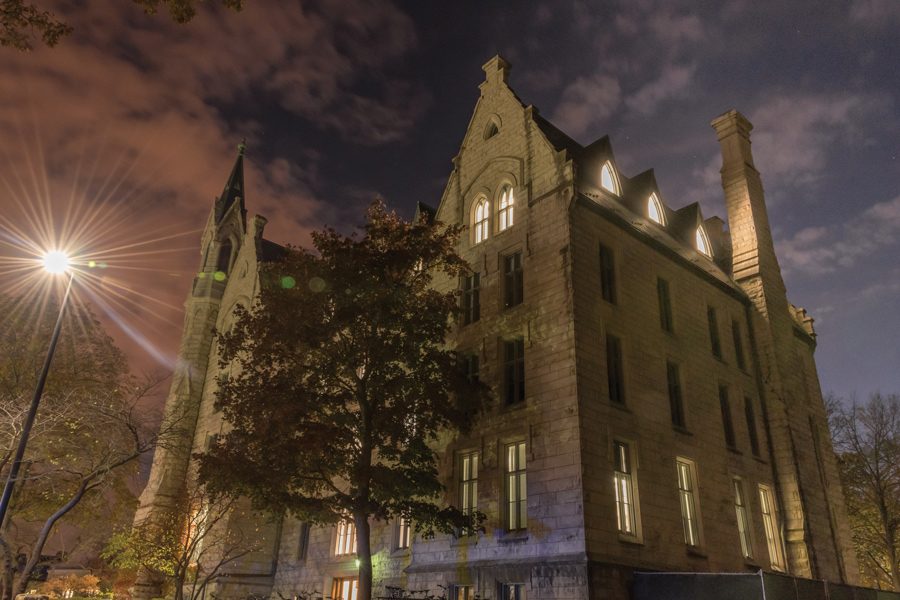Endowment grows 6.7 percent, likely placing NU within new endowment tax threshold
University Hall at 1897 Sheridan Road. The Northwestern Investment Office published numbers that the University’s endowment grew to about $10.5 billion at the end of August.
December 31, 2017
Newly-published figures by the Northwestern Investment Office indicate the University’s endowment has reached the threshold for a new endowment tax enacted Dec. 22 as part of the Tax Cuts and Jobs Act. University officials are still uncertain, however, what impact the tax will have on NU.
The Office published on its website that the endowment had grown to roughly $10.5 billion at the end of August 2017, completing the fiscal year with a 6.7 percent growth rate — up from last year’s $9.8 billion value.
The new figure suggests NU could join other private colleges — those with more than 500 students and assets with a market value of at least $500,000 per full-time equivalent student — in paying the 1.4% excise tax on annual net investment income.
The University currently reports 20,500 full-time equivalent students, meaning its assets have an estimated value of $510,000 per student. This figure could qualify NU for the tax beginning as early as next year.
Jonathan Yates, director of media relations for NU, told The Daily last week it wasn’t clear if the University would be immediately subject to the tax. The previously-reported figure of $9.8 billion would have placed the endowment’s value at roughly $480,000 per student — just under the tax threshold.
Al Cubbage, vice president for University relations, echoed Yates’s uncertainty in a Friday email to The Daily. Despite the new figure, he said, it’s still unclear to the University whether it will begin paying the tax this upcoming year.
With an endowment that has grown more than 10 times its size since 1991, however, it looks like Northwestern will eventually face the tax.
“We anticipate that the University would be (subject to the tax) in subsequent years, assuming the endowment continues to grow,” Cubbage said. “When that occurs, we’ll pay the tax. But we don’t know precisely what the impact may be.”
Critics have said that impact may include a decrease in financial aid for low-income students and fewer donations, as some may prefer money meant to fund the University not go to the federal government.
Cubbage declined to comment further, saying some answers to questions were unavailable due to office closures for the winter recess.
Whether NU pays the levy for the 2018 tax year, he said, will depend on how the federal government defines three key terms: the base year, the endowment and the number of students.
The reported figure of 20,500 NU students is based on the commonly used metric of full-time equivalent students, which calculates the number of average full-time students by taking into account the course load of part-time students.
Though it’s likely the federal government will continue to use this measure, the language remains vague and the Internal Revenue Service has not yet released clarifying information about the new law.
The law defines the number of students of an institution as the “daily average number of full-time students.” The metric would take into account part-time students “on a full-time student equivalent basis.”
What assets will be considered part of the endowment is also unclear.
The law calculates the value of endowment at the end of the tax year using the “aggregate fair market value of the assets,” excluding those “that are used directly in carrying out the institution’s exempt purpose.”
The IRS said in a statement it is withholding guidelines for the new tax law until January.
Email: alanperez2020@u.northwestern.edu
Twitter: @_perezalan_



